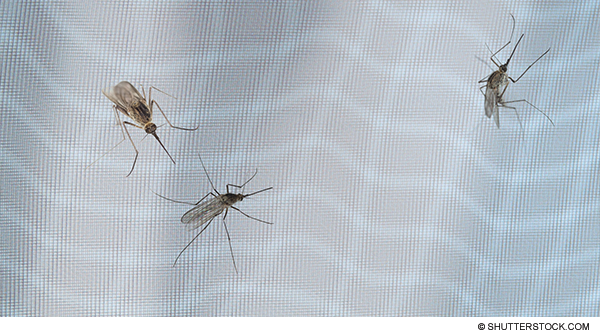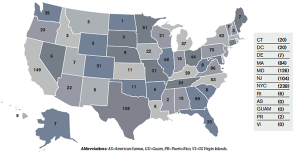
In the United States, the top 10 states reporting malaria cases, in the order of decreasing frequency, were New York (238), California (149), Maryland (126), Florida (120), Texas (109), New Jersey (104), Georgia (99), Virginia (86), Massachusetts (84), and Pennsylvania (70) (see Figure 1). In comparison to the other states, Massachusetts reported the highest rate of increase in cases of malaria in 2011 (133 percent, 36 in 2010 versus 84 in 2011).
Explore This Issue
ACEP Now: Vol 33 – No 02 – February 2014The purpose of travel at the time of malaria acquisition was reported by 871 (80 percent) of the 1,095 US civilians with imported malaria. The definition of US civilians excluded US military personnel. The most common reasons for travel among civilians included visiting friends or relatives (70 percent), missionary-related work (11 percent), and travelling for business (9 percent). Among foreign residents for whom the purpose of travel to the United States was known (303), 172 (57 percent) were recent immigrants or refugees and 80 (26 percent) were among those visiting friends or relatives.
With respect to the seasonality of malaria diagnosed in the United States during 2011, the reporting peaked in August for P. falciparum and P. vivax infections. This peak likely correlated with peak travel times during summer holidays. The majority of patients (86 percent) had their malarial symptoms on or after arrival to the United States. The remaining 14 percent had an onset of symptoms before arrival to the United States. Of those with the onset of symptoms after arrival to the United States, regardless of the involved Plasmodium species, most experienced their symptoms within one month after the date of arrival.
Among the individuals who reported taking a specific chemoprophylaxis agent, 83 percent took a CDC-recommended medication, while the remaining 17 percent took an agent that was not CDC-recommended for the area visited. Of those taking the CDC-recommended chemoprophylaxis and for whom adherence was known, almost 70 percent reported nonadherence to the proposed chemoprophylaxis regimen. Past history of malaria was known for 67 percent of the imported cases, of which 21 percent reported a history of infection within the past year. Based on the availability of data, 23 probable relapses were identified (22 due to P. vivax and one due to P. ovale). Relapsing malaria was defined as a recurrence of disease after its apparent cure. Relapses are caused by reactivation of dormant liver-stage parasites (hypnozoites) of P. vivax and P. ovale.
Pages: 1 2 3 4 5 | Single Page






One Response to “CDC Reports Record Number of Malaria Cases in the U.S”
August 6, 2019
Paul E. KuneliusI was discharged from the Army on 08/23/1967. I served in Vietnam from Sept. of 1966 to August of 1967. In the month of Feb. 1969 I came down with malaria and was treated at the VA and was in the hospital for one week. I live in Massachusetts and have for my whole life. My questions are was it possible to contact malaria in MA at that time and is it possible to have contacted malaria in Vietnam and have it not appear till 16 months later? I never had malaria in Vietnam. Thank You, Paul